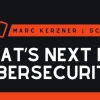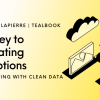When the COVID-19 global pandemic struck, businesses faced the task of rapidly shifting office-based employees to remote environments. Today, the primary focus is on managing these makeshift workplace models more efficiently. In the process, long-term initiatives are now on the back burner.
Indeed, tactical initiatives aimed at enhancing existing operations remain a top priority. That said, savvy leaders are looking ahead and defining key elements of a sourcing strategy roadmap that can address the future requirements of a continually evolving and uncertain New Normal.
Immediate Needs
The procurement and configuration of laptops and mobile devices for home-based users was a cornerstone of the transition to remote work. In many cases, this vast undertaking exposed some fundamental underlying performance gaps. Service desks were often ill-equipped to handle the increased volume of incidents resulting from users struggling to activate devices and load applications.
One reason was that agents were themselves in lockdown and lacked access to needed tools. Also, in-house support teams tend to be less mature in terms of process discipline around incident management, relying instead on “shoulder tapping” and ad-hoc problem-solving. While adequate (if sub-optimal) under normal circumstances, the strains of the pandemic rendered this approach untenable. As a result, many IT organizations continue to struggle with dropped service desk calls and support delays.
The rush to remote work also disrupted hardware refresh and lifecycle servicing. Deferring scheduled updates resulted in dated equipment. This further increased Level One Service Desk call volumes and compounded the existing challenges around providing fully remote support. While Zoom meetings have become a symbol of the pandemic, a rush to integrate and lack of user training have resulted in collaboration tools rarely fulfilling their functionality potential.
More ominously, delayed updates of anti-virus programs heightened security risks. For example, healthcare organizations – particularly mid-sized to small hospitals – have always been attractive targets and are especially vulnerable now. Cybercriminals have stepped up their attacks during the pandemic, and some hospitals report up to 10,000 attempted intrusions per week. Retailers, financial services firms and other industries handling sensitive data from home offices are similarly threatened.
Sourcing Strategies for Today and Beyond
At present, outsourcing strategies should focus primarily on short-term initiatives aimed at addressing the problems related to the shift to remote work. Specifically, technology partners should apply their resources to put out the various fires smoldering (if not raging) throughout their customers’ business enterprises. Service providers can pick up the slack on delayed hardware refresh and upgrades, and put basic processes around mobile device management.
Staff augmentation can plug gaps in internal service desks and support network and application maintenance. Tools and process expertise can identify, prioritize and mitigate mission-critical security risks. The question for both clients and their providers should be: “What can we do right now to address critical risks and enhance service delivery and support for end-users?”
While necessary given the urgency of the current situation, this reactive mindset is not sustainable over the long run. But while focusing on keeping the lights on, businesses can at the same time identify and document gaps in capabilities, resources and maturity that pose obstacles to operational excellence and a quality customer experience.
These lessons learned can inform steps toward a long-term strategy aimed at designing, implementing and managing a new operational ecosystem – one capable of meeting the challenges of an uncertain future.
Forming an Operational Roadmap
Formal assessments of local area networks, security postures and service desks can lay a basic foundation for a strategic roadmap. Once they have the necessary bandwidth, business leaders and project teams can apply this roadmap to define broader sourcing strategies regarding what to farm out and what to keep in-house. Functions such as end-user and deskside support, hardware refresh and network management can be candidates for outsourcing.
Mobility-as-a-Service models can be well-suited to flexible work arrangements. Given the challenges in-house teams face in keeping pace with constantly evolving risks and attracting and retaining scarce talent, a managed security services solution can be attractive.
The sourcing roadmap can also help executives define strategies around Artificial Intelligence and digital capabilities, and how innovation initiatives can meet evolving needs. Specifically, robust remote access and service capabilities will be essential; whatever the post-pandemic new normal looks like, home-based work in some form or another will likely remain a mainstay of operational models for some time.
What’s Next?
Beyond the basics of supporting remote work, sourcing strategies must address the myriad complexities that will lie ahead. For example, if and when office buildings fully reopen, how will distancing and hygiene policies be defined and enforced – and what role will IT organizations play? If businesses operate in shifts, what criteria will determine who goes to the office and who works remotely?
If, as seems likely, schools will not reopen on full-time in-class schedules, how will businesses accommodate working parents? Service providers will have to be nimble, flexible and responsive to help their customers tackle these questions.
The good news is that many IT executives are finding that 2021 budget requests are falling on favorable ears, and that funding will likely be available not only for next year’s projects but for longer-term initiatives as well. To take advantage of the opportunity, businesses and their technology partners should start looking ahead today – even as they remain focused on the immediate tasks at hand.









